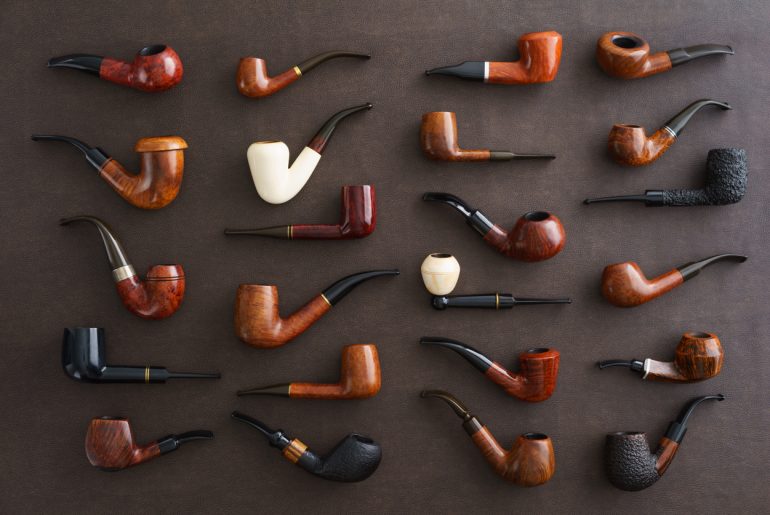As an avid pipe smoker, building a diverse collection of tobacco pipes is a delightful hobby and unique qualities and smoking experiences; curating a comprehensive collection can be a testament to the artistry and craftsmanship of pipe making. With a wide range of pipe types and shapes available, each with unique qualities and smoking experiences, curating a comprehensive collection can be rewarding and enjoyable. In this guide, we’ll explore various tobacco pipe types that every collector should consider including in their lineup.
A Symphony of Tobacco Pipes in All Shapes and Sizes
There are various types of pipes based on different designs and shapes. They can be divided into around nine categories. We’ll discuss them before continuing to pipes made of other materials that deserve a place in your collection.
- Apple Pipes
- Billiard Pipes
- Bulldog Pipes
- Calabash Pipes
- Canadian Pipes
- Curiosity Pipes
- Dublin Pipes
- Freehand Pipes
- Sitter Pipes
The considerations for dividing pipes into families are based on the bowl shape. We will look at materials further down. We suggest that you read this guide in conjunction with a previous post about selecting the perfect pipe for your smoking preferences.
Apple Pipes
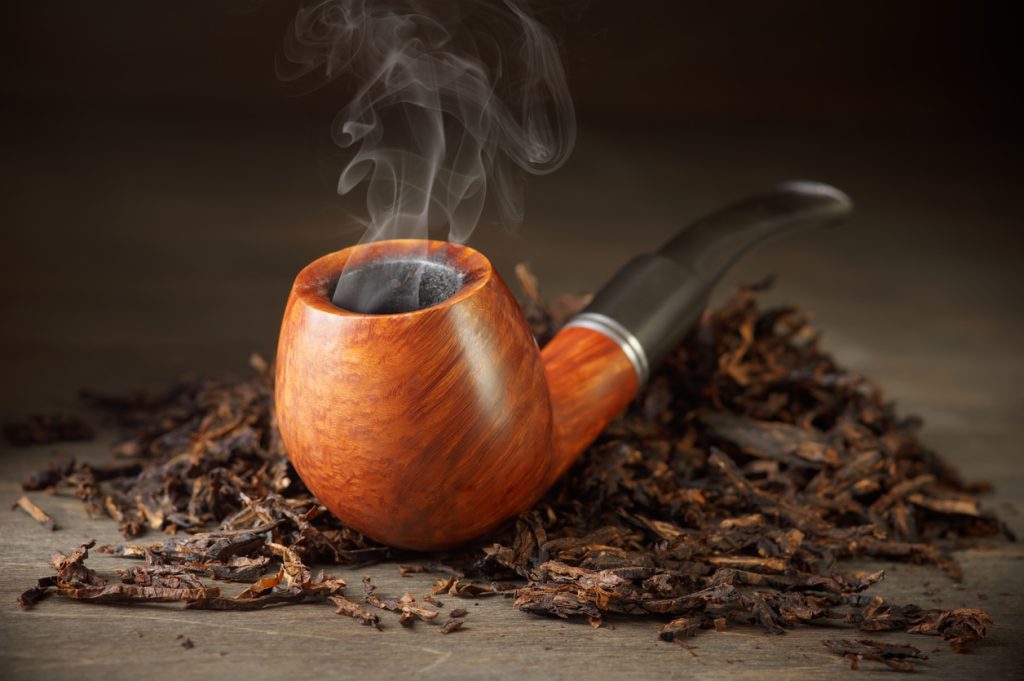
A prevalent style of pipe showcases a subtly rounded bowl resembling the shape of an ‘apple,’ often complemented by a stem featuring a tapered mouthpiece. Notably, the apple-shaped bowl boasts a greater thickness than other pipe variants. This thickness is pivotal in effectively absorbing the oils and heat generated during tobacco combustion.
To balance the weight of the substantial bowl, a distinctive feature of this pipe is the attachment of a bent stem. This design choice ensures comfort during smoking, enhancing the overall experience.
Let’s talk about some variations within the apple family:
Author
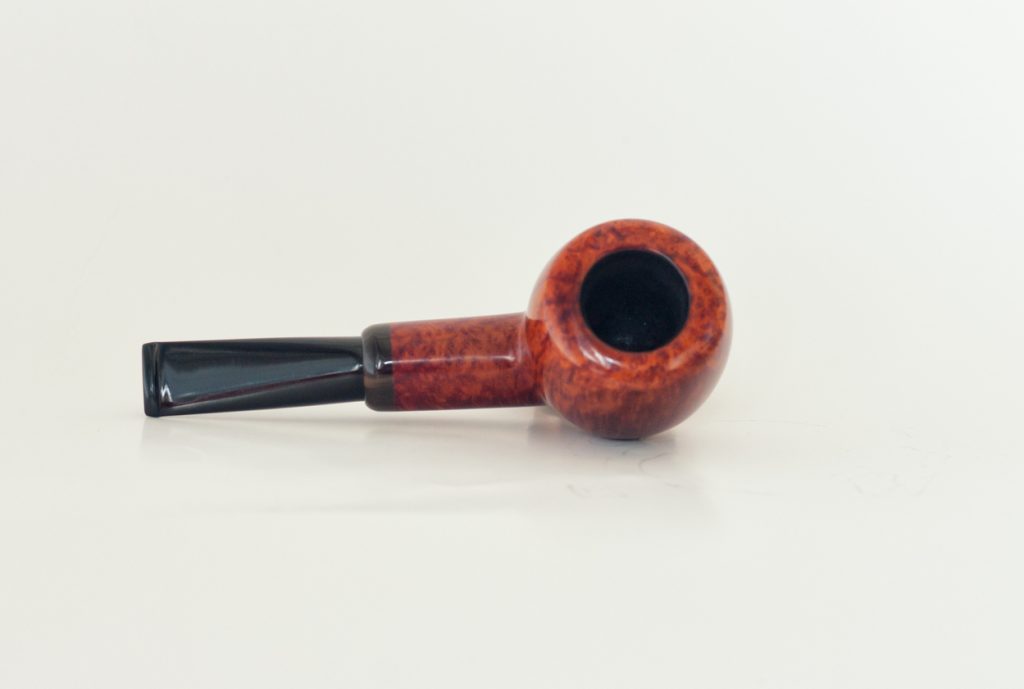
Author pipes are more significant, distinguished by their generously proportioned bowl and exceptionally thick shank and chamber. Sporting a bowl shape akin to the apple pipe, the Author’s design presents a distinguishing feature: a slightly shorter shank adorned with a robust, quarter-bent stem.
The expansive chamber of an Author pipe offers ample space for a significant quantity of tobacco, extending the pleasure of your smoking session with a prolonged and unhurried experience. This combination of substantial bowl and comfortable design makes the Author pipe a favored choice for those who relish extended moments of tobacco enjoyment.
Ball or Tomato
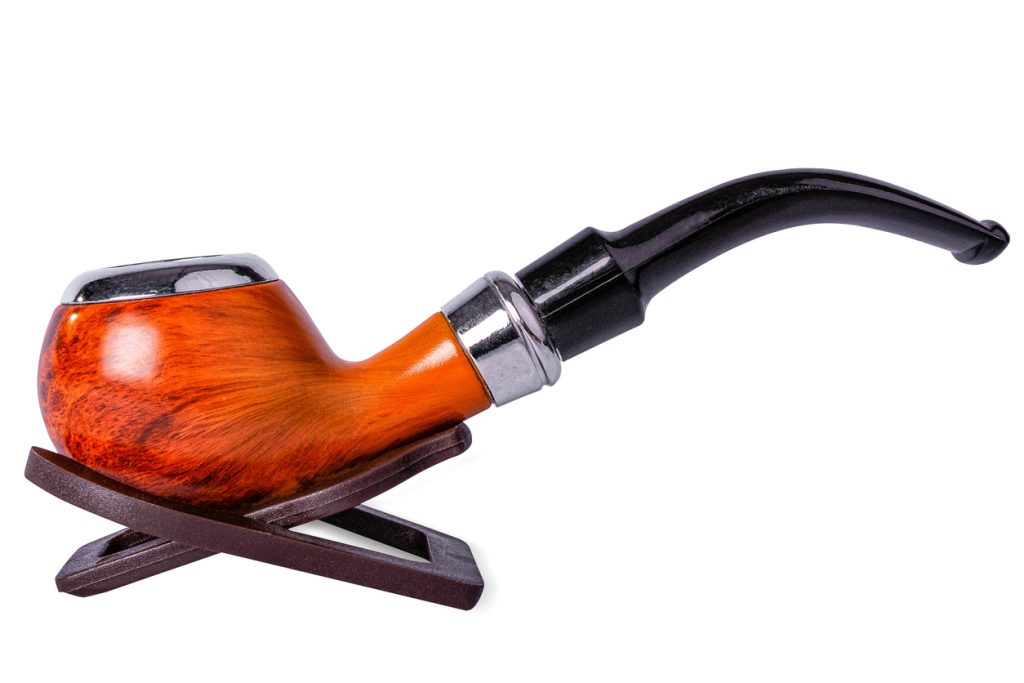
Go for the ball or tomato pipe if you want something more prominent than the apple. It’s usually bent and sports a saddle stem.
Diplomat
Imagine a different take on the classic prince-style pipe. The Diplomat has a slightly bent, oval stem.
Egg
If you see an egg-shaped pipe, it’s likely a variation of the apple family. Most of these are bent in shape and resemble elongated apples.
Hawkbill
This one’s a bit more adventurous. It’s a bent version of the apple with a round bowl and a curvy shank that stands out.
Prince
Named after the former prince Edward VII, this design is distinctive with its short bowl and a tad longer stem and slightly bent.
Squat Tomato
As the name suggests, the squat tomato is essentially a ball pipe gently pressed into an oval shape.
So, the apple family offers a delightful array of choices for pipe enthusiasts, whether you’re into the classic rounded look, something more robust like the Author, or even a curvaceous Hawkbill.
Billiard or Bent Pipes
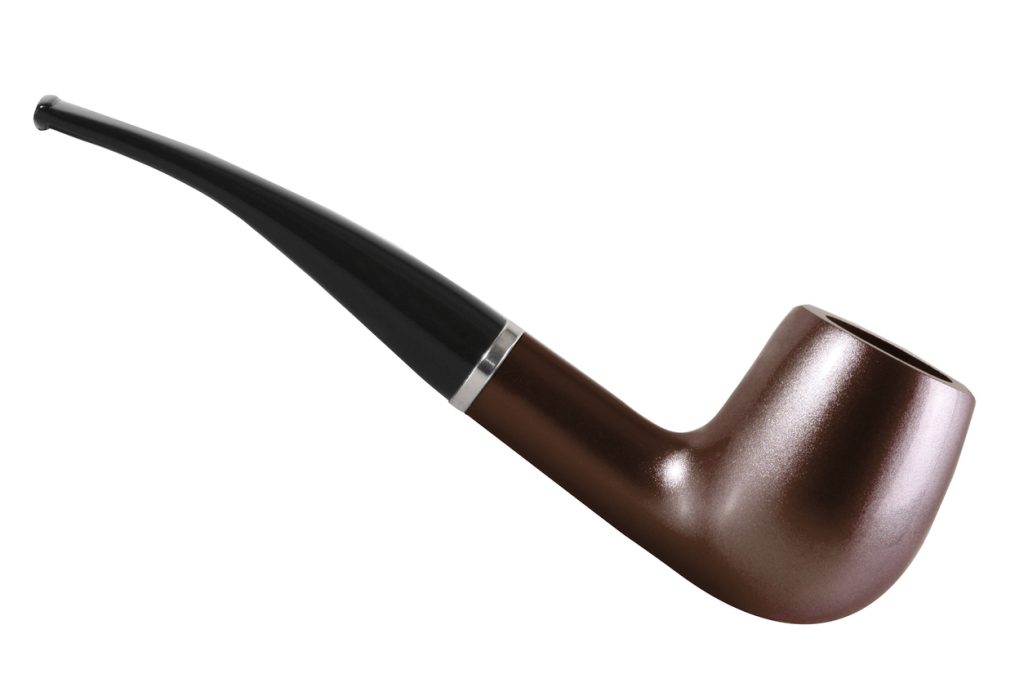
The Billiard is the most prevalent and familiar form, serving as a quintessential archetype for various other pipe shapes. This enduring design is a touchstone for pipe enthusiasts, drawing a steady stream of admirers. Characterized by a straight bowl housing a cylindrical chamber, the Billiard asserts itself at a precise 90-degree angle. Its versatility shines through its stem options, available in straight and bent variations, accommodating individual preferences for a comfortable grip.
Of course, there are also some variations on the standard look, as seen below:
Brandy
Crafted in the likeness of brandy glass, this distinctively shaped pipe boasts a conspicuous bulge that enhances its graspability. The hallmark of the classic brandy pipe often includes a quarter-bent stem. However, variations with either straighter or more curved stems can also be encountered.
Typically hewn from Briarwood, this pipe design frequently showcases a sleek and refined smooth finish, adding a touch of elegance to its already unique profile. The brandy pipe’s fusion of aesthetics and functionality makes it a notable choice for those seeking style and comfort in their smoking experience.
Chimney
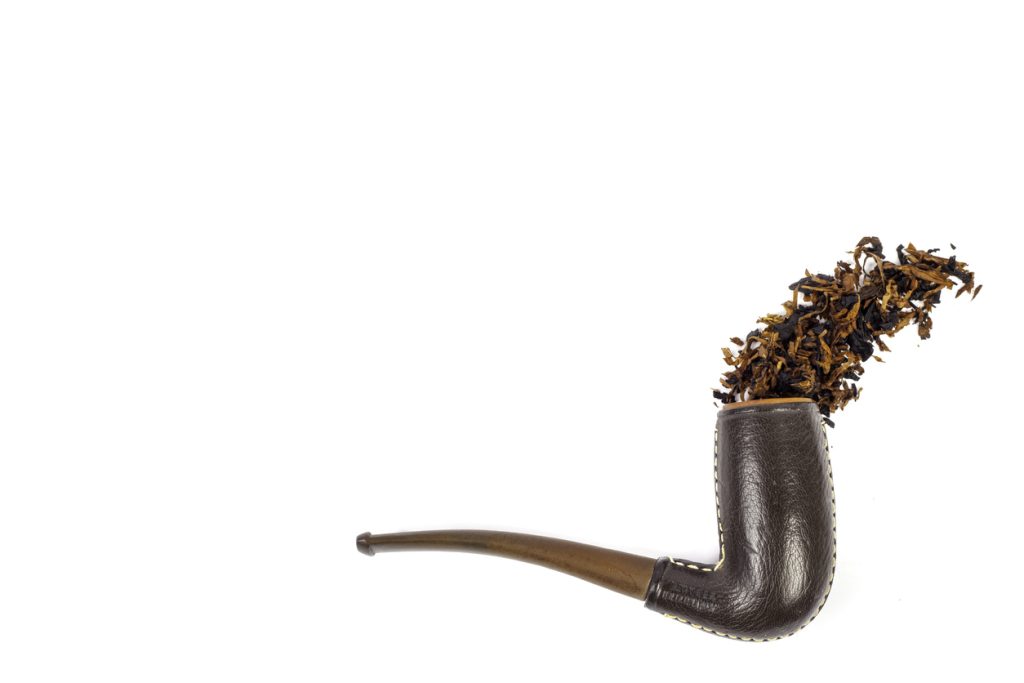
The name “Chimney” for a pipe makes sense because it’s all about that smoky feel. This type of pipe has a taller bowl that looks similar to a chimney, and that unique shape lets you load up more tobacco on an excellent smoking session.
Because of that taller bowl, making one of these pipes takes a fair bit of wood. That’s why they can be pricier and less common than other styles.
But let me tell you, the “Chimney” design is a real standout. It’s not just a regular pipe; it’s a work of art crafted with skill and attention to detail. It has a charm all its own, much like its namesake, and it lets you truly appreciate the craftsmanship of making a pipe genuinely exceptional.
Nose Warmer or Stubby
A billiard with a shorter stem and shank.
Oom Paul or Hungarian
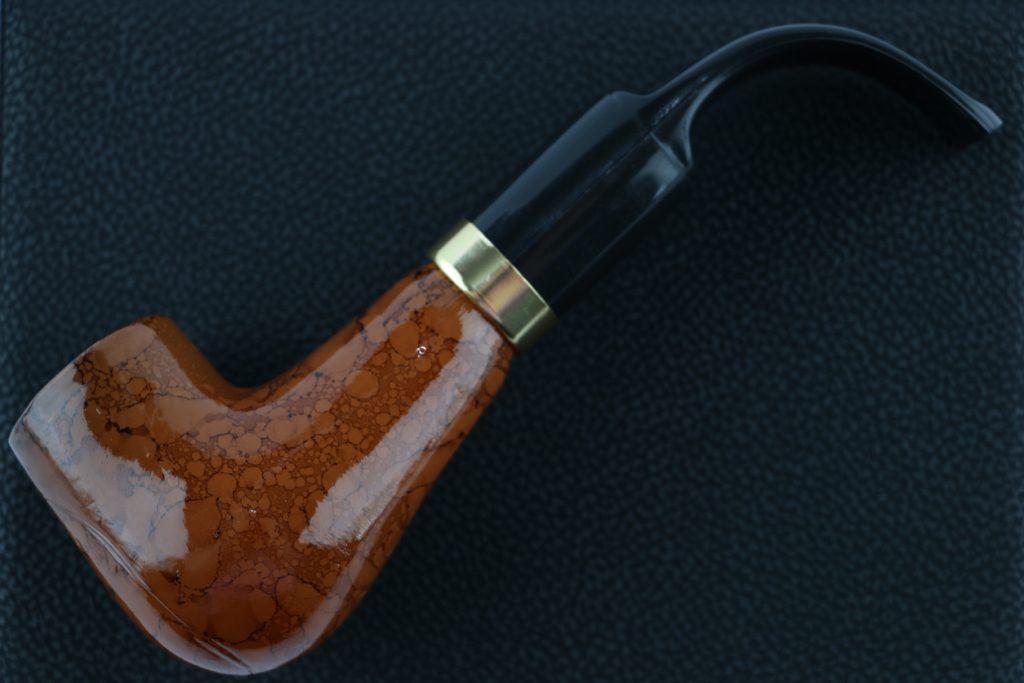
It is named after Paul Kruger, the former president of the Transvaal and ZAR Republic in South Africa. The Oom Paul pipe has a tall bowl and is fully bent to hang from the mouth comfortably.
Oval
Known as the “pocket pipe,” the oval is a flattened billiard to render it more portable.
Panel
A billiard with flat sides. If the shank is also paneled, then it’s referred to as a foursquare.
Pot
This Billiard consists of a shorter bowl for quick smoking sessions.
Bulldog Pipes
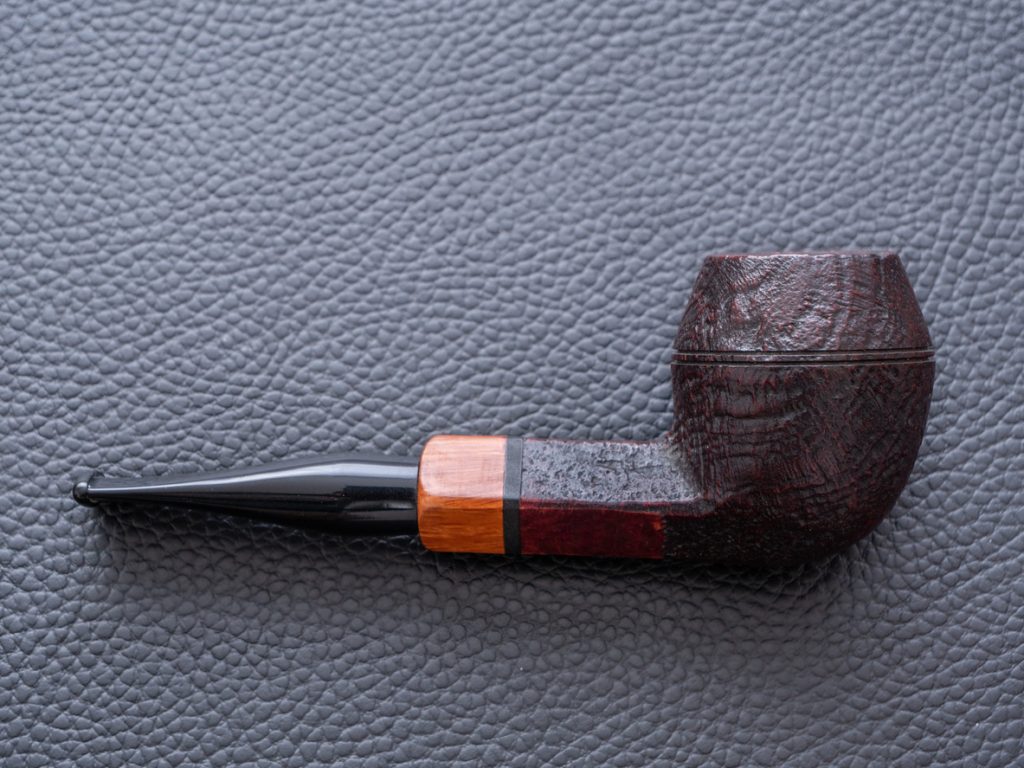
The Bulldog pipe family stands as a vibrant and diverse assembly of pipes, a testament to their enduring popularity and unique attributes. While they all share a core set of traits, each member of this family possesses distinctive characteristics that contribute to their individuality and charm.
Within the Bulldog family, the forward-leaning bowl adorned with grooves along its broadest point is a defining feature. Traditionally maintaining a straight form, these pipes occasionally deviate with graceful bends that add an extra touch of allure. At the heart of the classic Bulldog design is the diamond-shaped shank, flawlessly complemented by the tapered stem, creating a harmonious and timeless aesthetic.
This pipe’s distinctive attributes include its compact, substantial design and thicker wood walls. These qualities collectively establish the Bulldog as an ideal companion for consuming Balkan blends or flake tobacco. Its purposeful construction ensures a formidable smoking experience, catering to those who appreciate the strength and character of these particular tobacco varieties.
Below are some examples of the shapes you may encounter.
Bull-Moose
The Bull-Moose, reminiscent of the Rhodesian counterpart mentioned below, distinguishes itself with its bent configuration. Its robust and substantial profile showcases a lower bowl with a grounded elegance.
Bullcap
A noteworthy variant within this lineage is the Bullcap, a descendant of the Rhodesian style. This iteration stands apart with its saddle stem and a generously wide bowl, encapsulating form and function.
Rhodesian
Drawing parallels to the classic Bulldog yet forging its identity, the Rhodesian configuration substitutes the diamond-shaped shank for a rounder alternative. This adaptation showcases the versatility within the Bulldog family, all while maintaining the captivating essence of the original design.
Ukulele or Eskimo
Embodying innovation and uniqueness, the Ukulele or Eskimo style is an unconventional divergence. It features a charmingly domed bowl that pairs harmoniously with its wide, flattened shank and elegantly tapered stem. This design is a testament to the artistry that can emerge from the Bulldog lineage, embracing creativity while adhering to its distinctive her.
Calabash Pipe Family
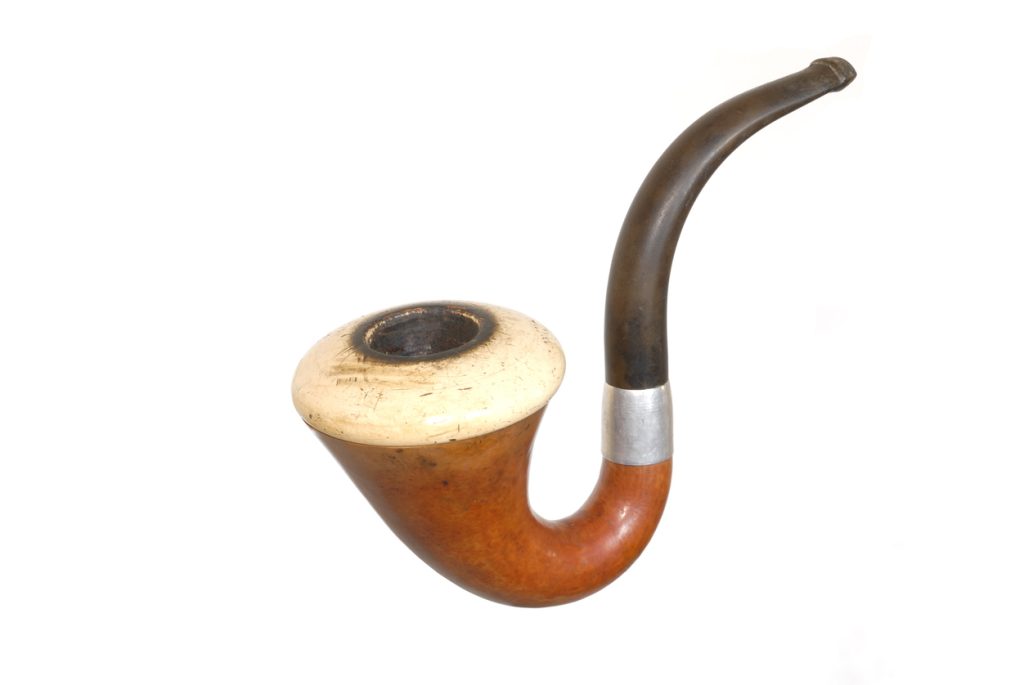
The Calabash pipe is iconic. It has become synonymous with its distinctive shape over time — largely thanks to its association with the legendary detective Sherlock Holmes. Its name originally referred to the material it was crafted from. Still, it has become synonymous with its distinctive shape over time. Traditionally, these pipes were handcrafted from dried calabash gourds.
However, as the popularity of briar wood soared, the shape of the Calabash persevered. At the same time, the gourd became a rare find. Occasionally, you might encounter pipes made from Meerschaum, although this is relatively uncommon.
Its easily recognizable design sets the Calabash pipe apart: a large conical bowl with a domed top that flares out. Additionally, both the shank and stem exhibit a unique curvature. “Elementary, my dear Watson,” Sherlock Holmes would have said.
While modern versions of this shape are usually hand-carved from briar or Meerschaum, the original Calabash pipes retained the gourd’s natural form. These versions incorporate a removable meerschaum bowl cap that fits snugly over the gourd.
Despite their appearance, the removable bowls on gourd pipes are relatively small. However, it’s worth noting that the natural properties of the gourd are said to contribute to some of the driest and smoothest smoking experiences one can savor.
In today’s market, you’ll also find affordable synthetic versions of the Calabash pipe, a testament to the enduring popularity of its unique design.
Canadian Pipes
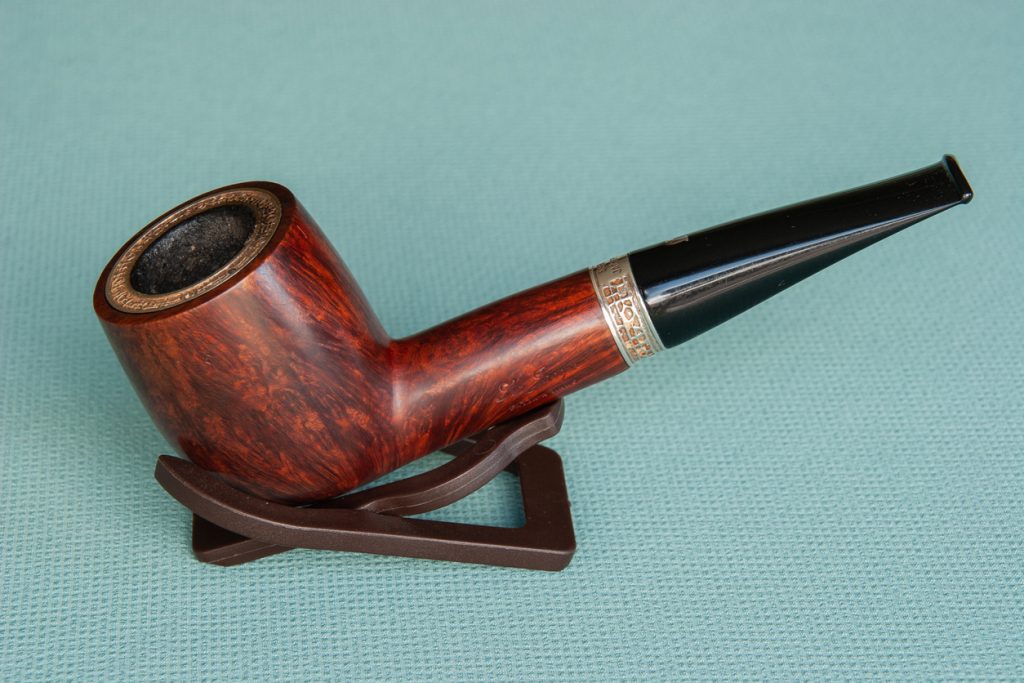
A Canadian pipe resembles a Billiard yet distinguishes itself with a notably elongated shank – that intermediary segment connecting the bowl and the stem. This shank extends at least 1.5 times the bowl’s height in a Canadian pipe, yet it doesn’t surpass twice its height. This elongated shank leads gracefully to a tapered stem.
The extended shank of the Canadian pipe serves a practical purpose, providing ample space for the heat and oils of the tobacco smoke to be absorbed. This unique feature contributes to a cooler and more enjoyable smoking experience, setting the Canadian apart in form and function.
Canadian
This variant showcases an elongated, oval shank that seamlessly converges with a gracefully tapered stem.
Liverpool
In the Liverpool rendition, the defining factor remains the lengthy shank, this time adopting a rounded shape. A tapered stem continues the elegant profile.
Lovat
The Lovat style upholds the tradition with a lengthy, rounded shank that gracefully integrates with a saddle stem, marking a union of sophistication and practicality.
Lumberman
With a name that evokes imagery of the outdoors, the Lumberman design boasts an elongated, oval shank akin to its Canadian sibling. A saddle stem completes the package, culminating in a harmonious blend of form and function.
These Canadian pipe variations may share similarities, but the nuanced differences in shank shape and stem type set them apart. This family pays homage to tradition with an oval or round shank while offering choices catering to aesthetic preference and individual comfort.
Curiosity Tobacco Pipes
Don’t let this placement fool you; these pipes are as iconic as their more categorized counterparts.
Church Warden or Reading Pipes

The Churchwarden pipe is more about the stem than the pipe itself. To truly earn this distinction, a Churchwarden must boast a branch of at least 9 inches long. While the stem’s extension can push the boundaries, comfort remains key – though most commonly, lengths fall within the 9 to 18 inches range.
When it comes to the bowl, there’s no fixed size or shape. However, a preference tends toward a smaller bowl, as it offers easy handling and smoking.
Initially, these pipes were fashioned from clay. Nowadays, briar has taken the lead as the preferred material, though Meerschaum Churchwardens also make a fair appearance. Interestingly, the Churchwarden’s allure saw a resurgence, primarily attributed to Gandalf’s iconic use of one in the Lord of the Rings series. This elegant, elongated pipe style has stood the test of time and found a place in contemporary culture.
Falcon
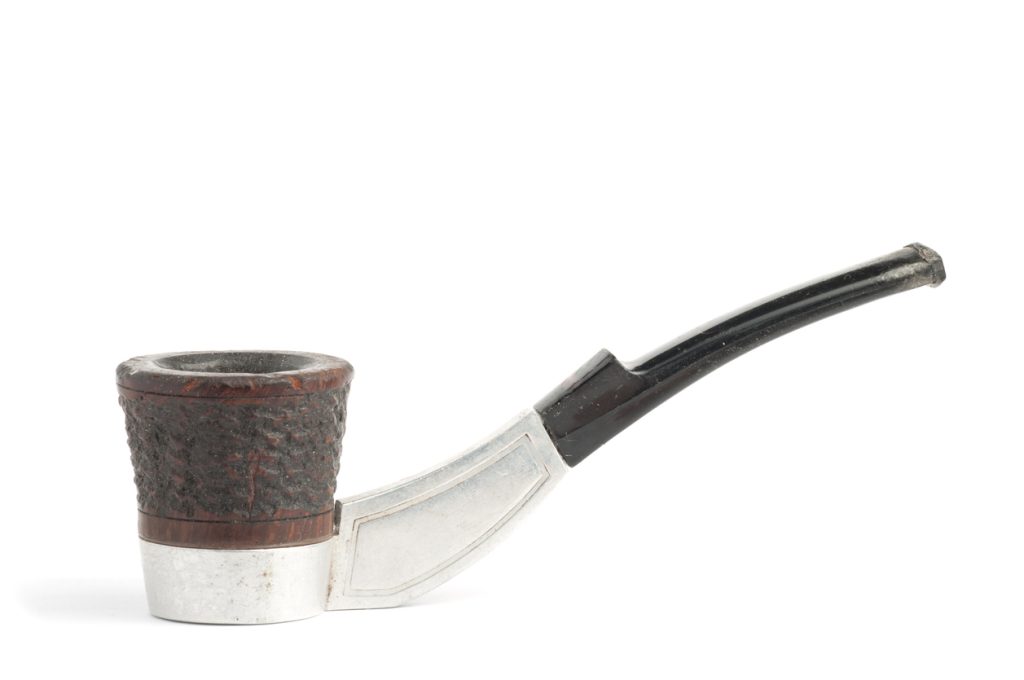
The Falcon pipe stands as a true standout, showcasing a metal shank that supports a removable bowl at its base. This innovative design brings together modern materials and traditional craftsmanship.
Vest-Pocket
Fittingly named, the Vest-Pocket is a fascinating foldable pipe that can be conveniently slipped into your pocket. It’s a testament to ingenuity and portability in the world of pipe design.
The Curiosity Pipe Family may not follow the alphabetical norm, but their distinctiveness shines through their intriguing and varied forms. Each of these pipes holds a unique story, making them equally captivating and iconic in their own right.
Dublin Pipes
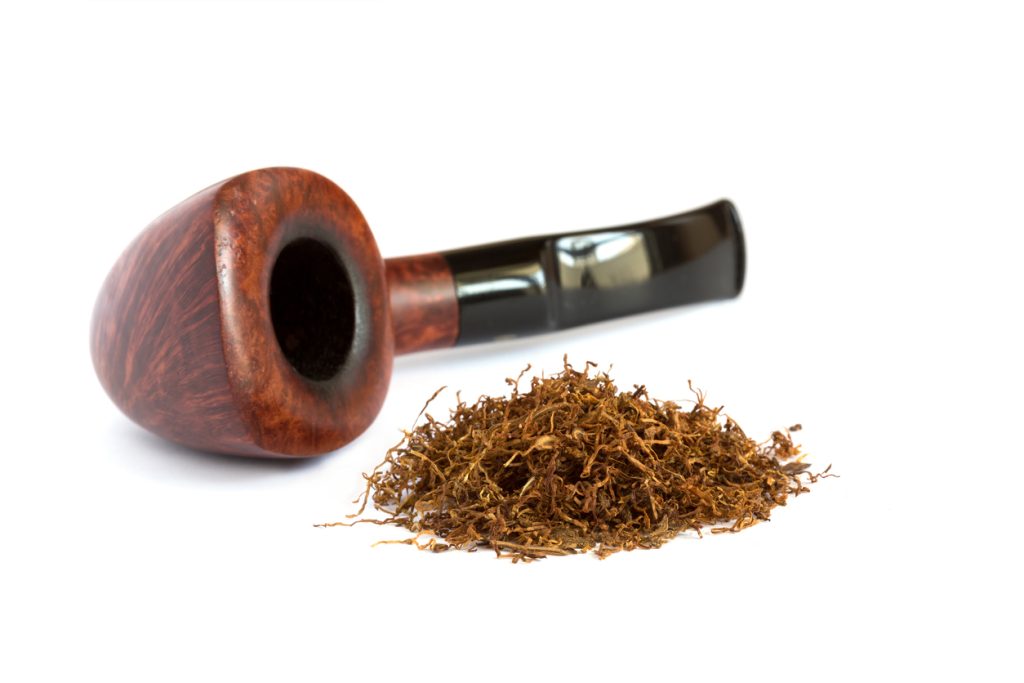
Like the classic billiard shape, the Dublin pipe family stands out with its distinctive conical bowls. It is also one of the oldest shapes known to pipe smokers. The tapered interior sets these pipes apart, creating a unique smoking experience where flavors become more concentrated as you progress.
Acorn or Pear
The Acorn, sometimes called the Pear, boasts a rounded Dublin profile with softly curved edges. This design not only embodies aesthetics but also offers pocket-friendly comfort.
Cutty
The Cutty pipe, the earliest enduring pipe shape still crafted today, harks back to the lengthy clay pipes popular in 16th-century Britain during the dawn of pipe smoking. This form was initially adopted due to its convenience for clay pipe production. In its design, the bowl extends further downward compared to many contemporary pipes, a feature intended to divert smoke and heat away from the smoker’s face.
Devil-Anse
The Devil-Anse combines the essence of the Dublin and apple pipe designs. With a compact, slightly tilted bowl, this hybrid creation carries its charm.
Skater
Boasting a pointed bowl reminiscent of a boat’s prow, the Skater embodies a Dublin configuration with subtle acorn-like touches. It’s an elegant fusion that captures attention.
Zulu or Woodstock
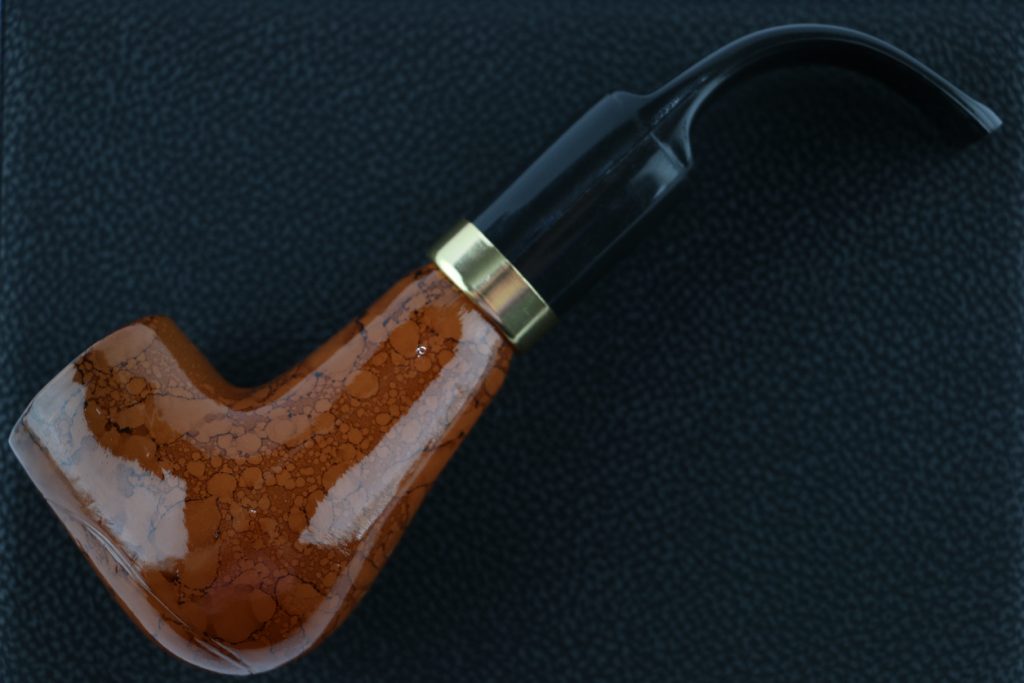
Also known as the Yacht, the Zulu or Woodstock takes the curved Dublin concept further with a bent shape, inviting a comfortable hold between the teeth. However, it often distinguishes itself with thinner walls, rendering it a lightweight pipe. Its unique configuration sets the Zulu apart from many other bent pipes: it boasts a straight shank extending from the pipe at a 90-degree angle and a gracefully bent stem.
The gentle bend in the stem and the overall lightweight construction of the Zulu contribute to its reputation as one of the most user-friendly pipes to smoke. This combination of features adds to its ease of use. It makes it a preferred choice for those seeking a comfortable and enjoyable smoking experience.
Dublin Pipe Variants
Each member of the Dublin family shares this overarching conical bowl characteristic, but individuality shines through their distinct features. The conventional Dublin pipe offers versatile options: straight or bent. It might carry a tapered or saddle bit. Beyond that, the shank can be round, oval, or square.
Freehand Tobacco Pipe Shapes
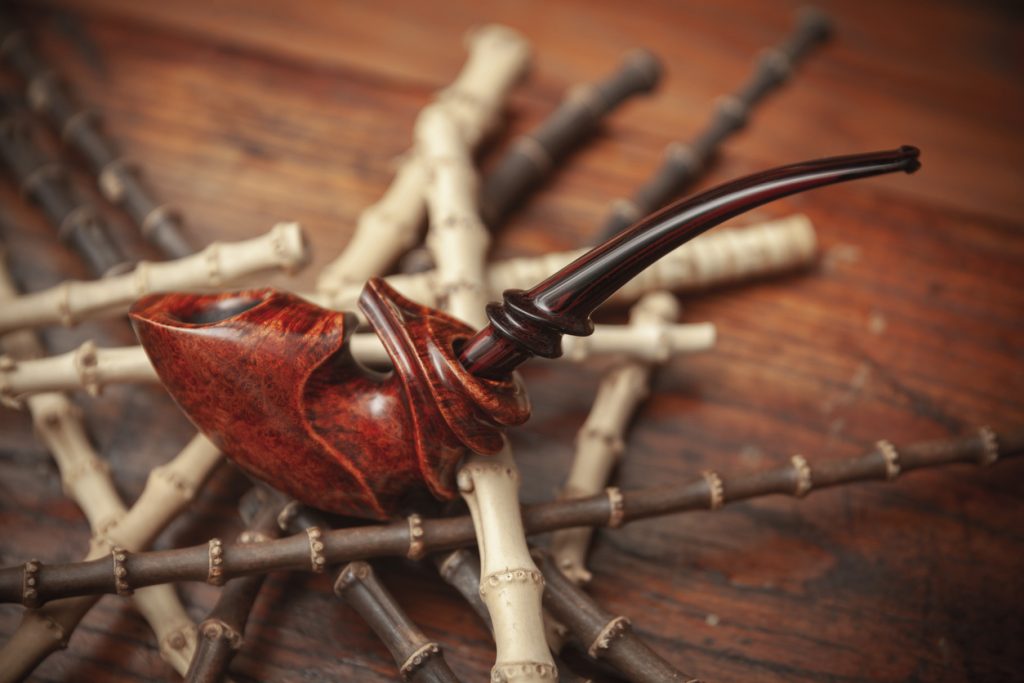
In the realm of freehand pipes, uniformity in design takes a backseat while the concept and principle reign supreme. Simply put, a freehand smoking pipe is a creation crafted by an artisan who, in carving, seeks to embrace the natural contours and grain of the briar wood.
This artistic approach often yields intricate and lavish pieces, celebrated not just for their functionality but also for their artistic allure. Amidst this creative expanse, a few designs have carved their niche, becoming modern iterations of the smoking pipe.
Fleur
The Fleur showcases a bowl rim that may intentionally bear a rustic, unfinished look reminiscent of a flower, adding a distinctive touch.
Blowfish
With an asymmetrical spherical design, the Blowfish skillfully highlights the wood’s birdseye grain, forming captivating rings that draw the eye.
Elephant’s Foot
Designed by Bo Nordh, the Elephant’s Foot boasts an unconventional silhouette that amplifies the birdseye grain, an artful presentation from the front.
Horn or Oliphant
This style can be likened to a slightly curved, tapering tube of meticulously finished briar.
Nautilus
The Nautilus form defies conventional definition, featuring a shank curving back to reunite with the bowl like the graceful crest of a wave.
Pick-Axe
The Pick-Axe showcases a paneled bowl, resonating with the tomahawk design, providing a fresh twist on the familiar.
Ramses
Another creation by Bo Nordh (sadly, he passed away in 2006), the Ramses draws inspiration from the Cavalier but takes on an ornate and unique form sans a base hole.
Tomahawk
The Tomahawk features a bowl with a pointed base reminiscent of its namesake weapon, adding a touch of intrigue.
Volcano
The Volcano presents a conical bowl with a rounded base, exposing a mesmerizing birdseye grain from beneath.
In the realm of freehand pipes, individuality reigns, birthing functional pieces of art that reflect the craftsmanship of their creators. Each design is a testament to innovation and reverence for the wood’s natural character.
Sitter Tobacco Pipe Shapes
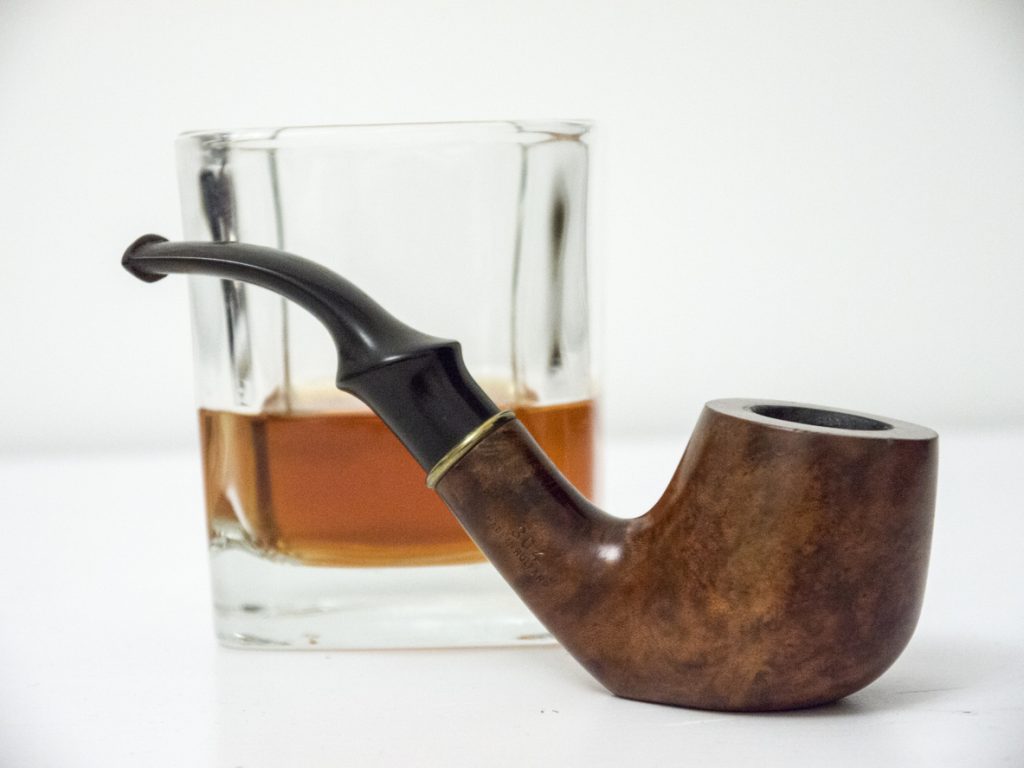
The Sitter Pipe stands out for its practicality in the realm of pipes. As its name suggests, these pipes are designed to stand freely, making them the perfect choice when you need to set your pipe down between puffs or during those idle moments when it’s not in use.
Cherrywood
A Cherrywood pipe isn’t necessarily made from cherry wood despite its name. It’s a bent version of the poker pipe described below, offering a unique twist on the classic sitter design.
Duke or Don
The Duke, sometimes called the Don, distinguishes itself using a removable vulcanite or bone shank rather than briarwood. This subtle variation adds character and individuality to the pipe’s construction.
Poker
Designed with card players in mind, the Poker pipe features a cylindrical bowl with a flat base. This design lets you conveniently set the line down when dealing cards or taking a break.
Tankard
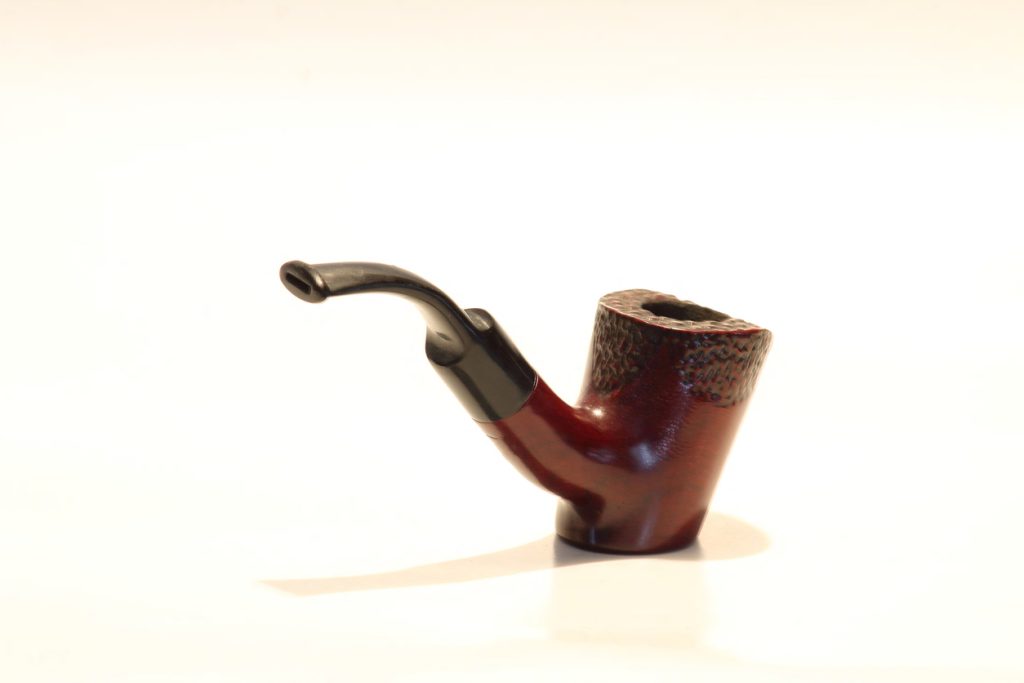
In contrast to the typical cylindrical shape of a sitter pipe, the Tankard pipe often boasts a broader base. This design variation enhances stability and provides a unique aesthetic flair.
These Sitter Pipe variants, whether crafted from briar or more unconventional materials like corn cob, offer a practical and stylish solution for those who appreciate both the act of smoking and the moments in between.
Unique Materials to Consider
As seen in the list above, almost any shape and size is available to pipe smokers. There is something for everyone, from traditional forms to freestyle, unique pipe shapes. Below, we’ll briefly delve into the world of materials (we’ve covered materials in more detail in a previous post).
Clay Pipes
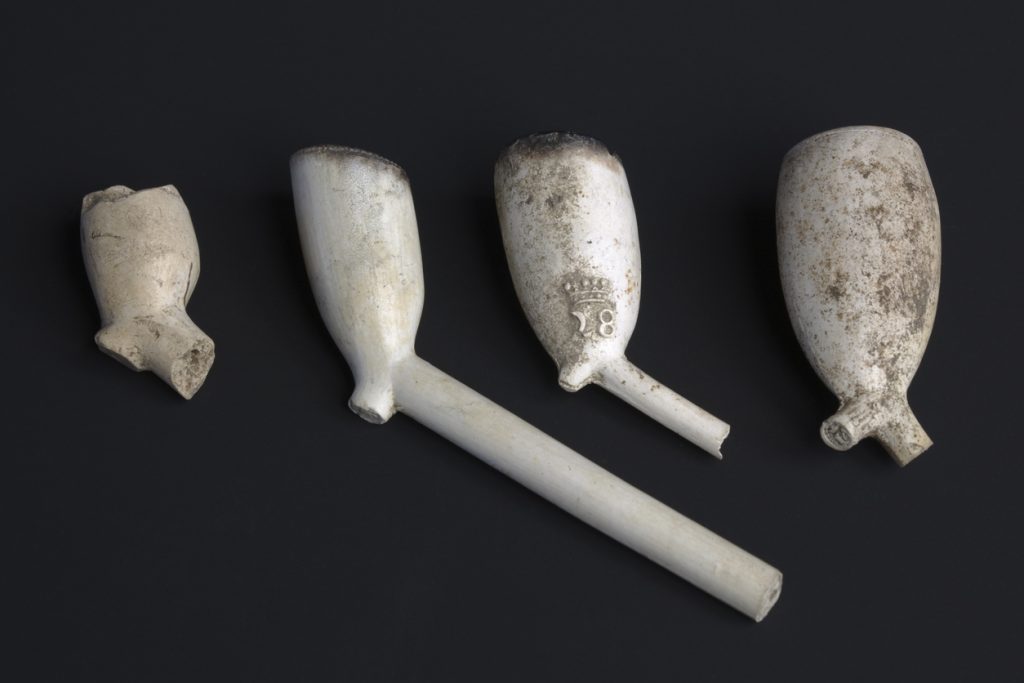
Clay pipes have a rich history dating back to the 16th century as a favored tool for enjoying tobacco. What sets clay apart is its ability to deliver a “pure” smoke, untainted by any additional flavors from the pipe bowl. Compared to other pipe materials, clay tends to burn at higher temperatures, adding a touch of complexity to its handling.
While historically cherished, this characteristic has made them less commonly favored in modern times. Despite their historical significance, the allure of clay pipes has somewhat diminished due to their unique challenges in heat management and handling.
Meerschaum Pipes
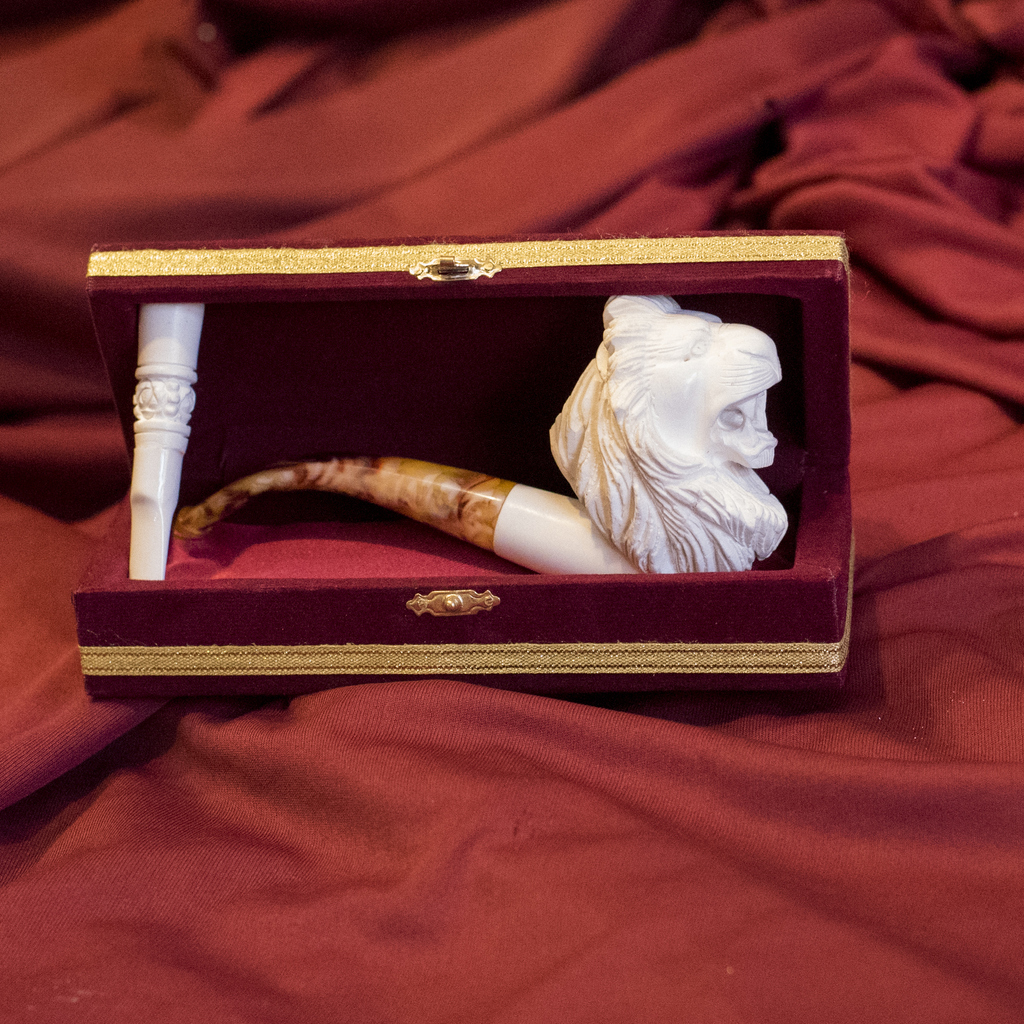
Meerschaum, sourced from the vicinity of the Black Sea in Turkey, is one of the most prized and costly materials employed in pipe craftsmanship. Renowned for its exquisite qualities, Meerschaum boasts a remarkable carvability. This unique attribute lends itself to creating pipes adorned with intricate and elaborate designs, contributing to their elevated price tags.
Beyond the financial aspect, Meerschaum pipes are highly coveted for the exceptional smoking experience they offer, coupled with their aesthetic appeal. These pipes are celebrated for their lightweight nature, allowing for comfortable handling.
The hallmark of a Meerschaum pipe is the cool and smooth smoke it delivers, an attribute cherished by enthusiasts who seek an elevated smoking experience. Despite their steep cost, the allure of Meerschaum pipes transcends financial considerations, reflecting a confluence of craftsmanship, aesthetic beauty, and a delightful smoking encounter.
Briar Pipes
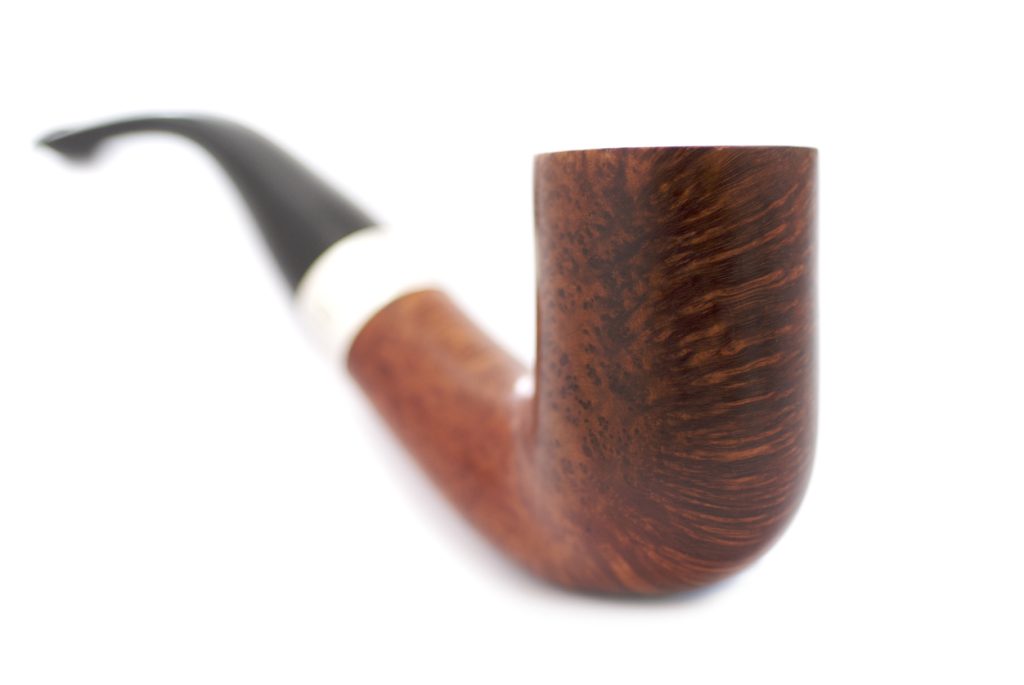
Make sure to check out
The most commonly used material for making tobacco pipes is Briarwood. It is ideal for use in pipes due to its durability, heat resistance, and the fact that it is breathable.
The porous nature of the briar wood also makes it perfect for absorbing the oils and heat produced when burning pipe tobacco. Briar is a type of wood found at the roots of Erica Arborea trees, predominantly near the Mediterranean Sea.
Pipes crafted from briarwood offer a canvas for various finishing techniques, each contributing to a distinct aesthetic. Some serve primarily as visual enhancements, while others are strategically employed to mask any imperfections:
- Brushed: A lighter version of rustification, the pipe undergoes wire-brushing to achieve a gently carved texture. This imparts a subtle yet appealing carved finish to the pipe’s surface.
- Carved: In line with its name, the carved finish involves intricate scrolling and imagery, adding an artistic dimension to the pipe’s design. This technique elevates the pipe into a work of art.
- Rustic: A stylized finish is achieved by carefully cutting into the briar. Often selected to conceal less favorable briar grain, this technique not only masks imperfections but also imparts a distinctive charm.
- Sandblast: Credited to Alfred Dunhill, the sandblast finish involves high-pressure sand to unveil the intricate relief of the grain on the wood. This method brings out the natural texture of the briarwood, resulting in a tactile and captivating surface.
- Smooth: A hallmark of refinement, the smooth finish involves a meticulous buffing and polishing process, culminating in a glossy, varnished appearance. This technique showcases the inherent beauty of the briarwood, exuding an aura of elegance.
Each finishing method adds a unique touch to the briarwood pipes, allowing enthusiasts to select based on visual preferences and the desired character of the pipe itself. Whether it’s an ornate carving or a sleek polished surface, the finishing technique further enhances the allure of these smoking companions.
Corn Cob Pipes
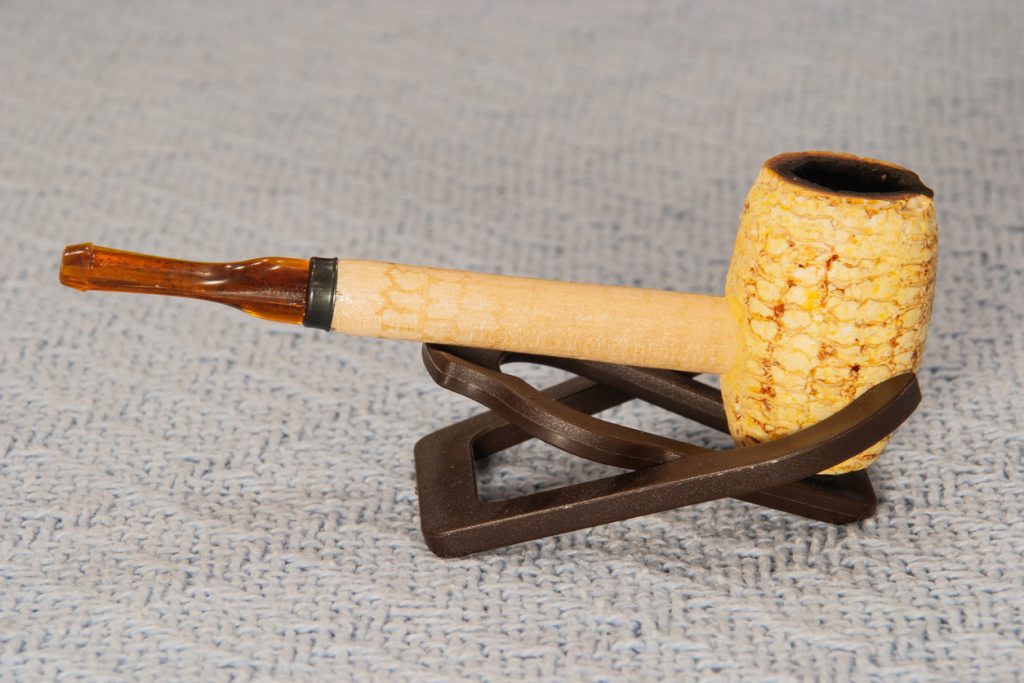
Harking back to the American Frontier, the corncob pipe evokes memories of iconic figures like Popeye, Douglas MacArthur, and Mark Twain. Its identity is deeply intertwined with the USA, symbolizing nostalgia and rugged individualism.
Crafted from hollowed-out corncobs that have patiently dried over several years, these pipes are famed for delivering cool and clean smoking sessions. Creating these pipes involves carving out the cob, resulting in a distinctive appearance and character.
Although some might view corncob pipes as rustic, they are highly recommended for newcomers to the pipe-smoking world. Not only are they economical, but they also eliminate the need for a break-in period. Their simple design makes them exceptionally easy to smoke.
Just like their briar counterparts, corncob pipes can be treated with various finishes:
- Natural: This finish leaves the corncob raw, creating an authentic and rustic appearance.
- Stained: By applying oil, the corncob takes on a darker hue that accentuates its natural texture.
- Varnished: A coat of varnish imparts a glossy sheen, transforming the corncob into a polished and elegant pipe.
Corncob pipes are a charming testament to an earlier era, embodying a sense of history and simplicity. Beyond their visual appeal, they offer a smoking experience that is approachable, enjoyable, and uniquely American.
Figural Porcelain Pipes
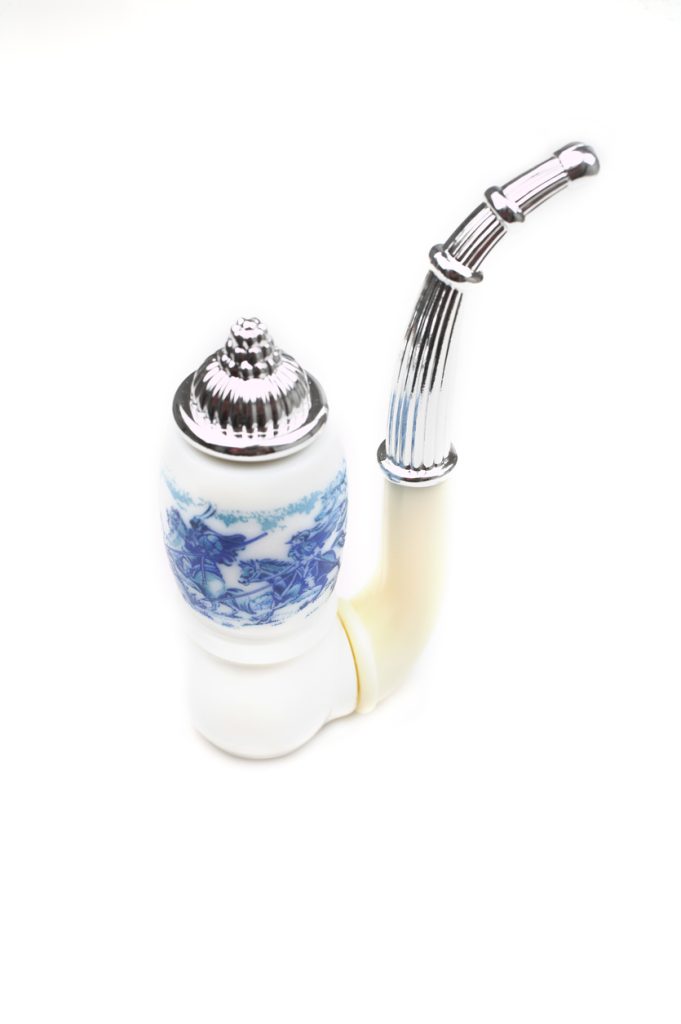
Last but not least, we look at other historical material.
Figural porcelain tobacco pipes are prized collectibles, with their origins tracing back to the early years following the invention of European porcelain around 1720. Notable modelers like Johann Joachim Kändler and his student Johann Gottlieb Ehder played pivotal roles in shaping this art form. A lion-shaped pipe bowl stands as an early exemplar.
Throughout the latter half of the 18th century, portrait-adorned porcelain pipes remained in vogue, reserved for affluent smokers. These pipes featured Turkish figures, showcasing intricate turbans painted in many hues.
By the 19th century, porcelain figural pipes experienced a decline in aesthetic quality due to increased competition and mass production. The refined charm of portrait pipes yielded to more ordinary, folk-inspired designs.
A standout achievement emerged in the form of finely modeled Napoleonic generals, showcasing meticulous design and painting. This followed the earlier trend of chic portrait pipes and highlighted porcelain pipe craftsmanship.
Around 1900, figural porcelain pipes exited the market. The later creations veered towards less refined motifs focused on indulgence, often centered around drinking. These creations emerged from workshops in Bohemia, diverging from authoritative porcelain factories and embracing serial production. Indulge your eyes and look at some fine examples here.
Conclusion
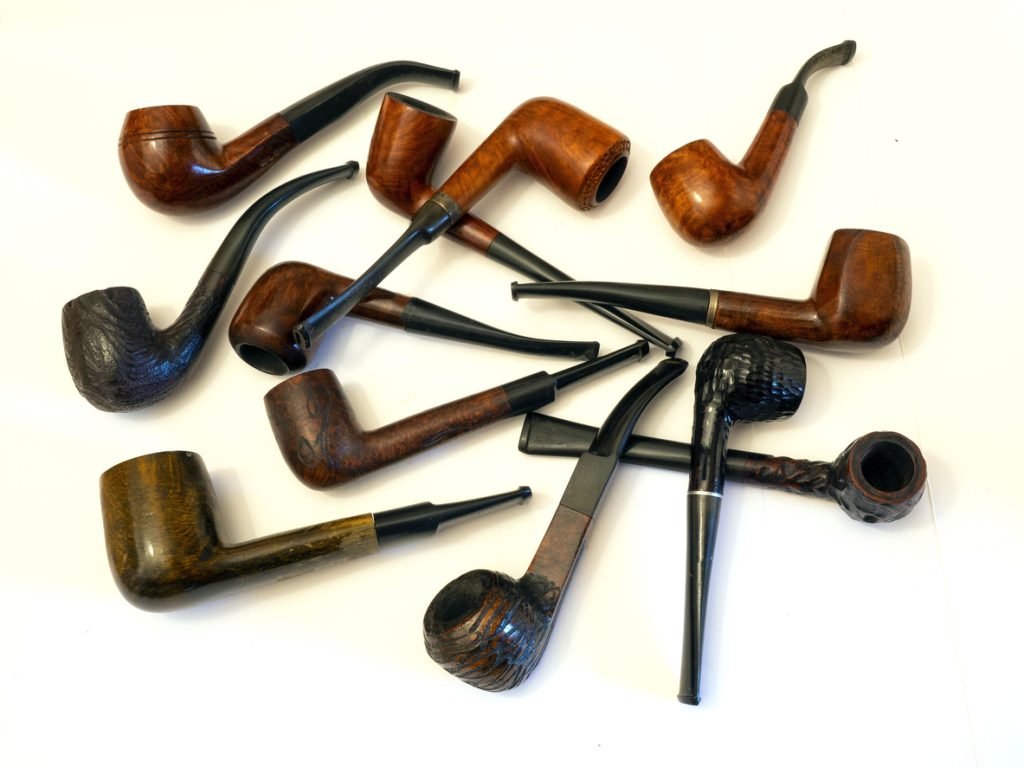
In the world of pipe smoking, building a diverse collection of tobacco pipes is not just a hobby; it’s a celebration of artistry and craftsmanship. With various pipe types and shapes, each offering unique qualities and smoking experiences, curating a comprehensive collection becomes fulfilling and enjoyable. This guide has explored different tobacco pipe types that should be in every collector’s lineup.
From the harmonious curves of Apple pipes to the classic Billiard and the distinctive Bulldog family, pipe enthusiasts have an expansive canvas to explore. The Calabash pipes evoke Sherlock Holmes’ mystique, while Canadian pipes embody elegance through their elongated shanks. The Curiosity pipes offer a touch of the extraordinary, while Dublin pipes concentrate flavors through their conical bowls.
Venturing into Freehand pipes, artisans sculpt briar into functional works of art, each piece unique in its design. Sitter pipes stand ready to rest between puffs, while pipes made from clay, Meerschaum, briar, and corncob have their allure and benefits. Figural porcelain pipes transport collectors to an era of intricate craftsmanship and historical elegance.
In every corner of this diverse landscape, pipes are not just tools for smoking; they’re expressions of creativity, history, and personal taste. The world of pipe collecting is a journey through time, culture, and human ingenuity, inviting enthusiasts to explore, learn, and appreciate the nuanced craftsmanship that goes into each piece. So, whether you’re drawn to the traditional or captivated by the avant-garde, there’s a pipe type for every collector, each with its story and a distinct smoking experience to offer.

